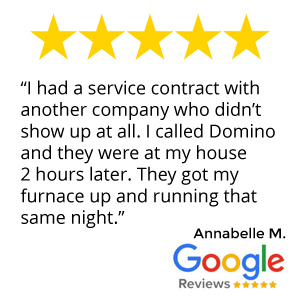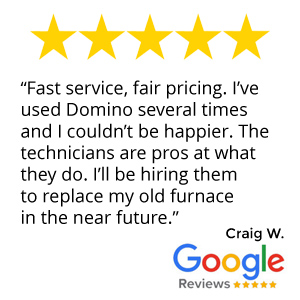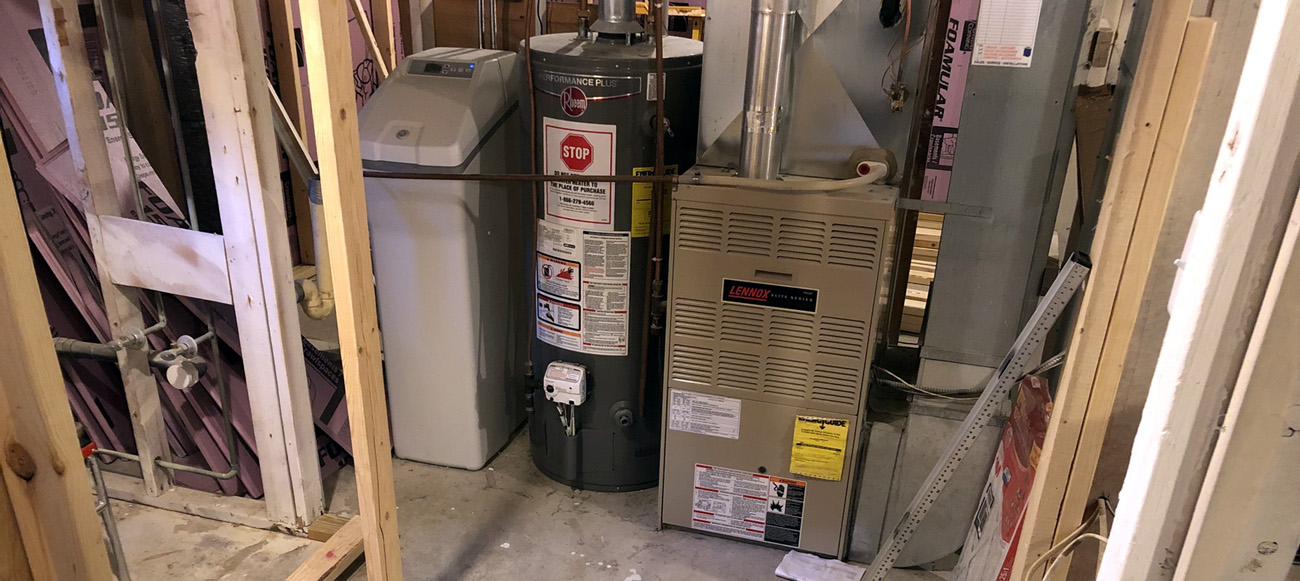Get a Free Furnace Replacement Estimate Today – Call or Fill Our Form Below
What Our Customers Have to Say



Furnace Replacement Cost Long Island
When undertaking furnace replacement, homeowners should primarily consider the type and efficiency of the furnace, as well as the associated costs and budget requirements.
When an aging or damaged furnace finally dies in the midst of a cold winter, most homeowners’ first thought is “How much will it cost to replace?” Furnace replacement represents a major home system upgrade that often runs $3,000 to $6,000 or more. There are many factors that influence the total replacement costs that savvy homeowners should review before committing to a new unit.
The first major cost determinant is whether you need a full HVAC system replacement or just the furnace unit itself. Full system replacements that also upgrade the home’s ductwork, central a/c system and ventilation tend to run between $8,000 to $12,000 as a whole. If the current ductwork and electrical components are still in good shape, replacing only the furnace unit itself averages $3,000 to $4,500 in most cases. The heating capacity needed for your home’s square footage along with fuel type – gas, electric, oil – will also impact price points.
Smaller variables like permits, installation charges, smart thermostat upgrades and multi-year labor warranties can quickly tack on several hundred to a thousand+ dollars to replacement costs. Reputable HVAC contractors like Johnson Heating & Cooling break out all these costs in their quotes, avoiding surprise charges. When comparing furnace replacement quotes between companies, homeowners should carefully examine what is covered – and for how long – to ensure they are making an apples-to-apples cost comparison. Paying a little more upfront for a higher efficiency furnace with robust multi-year labor protection is often worth the investment over the system’s lifespan of 15-20 years.
Types of Furnaces and Efficiency
There are three primary types of furnaces found in residential settings: electric, gas, and oil furnaces. An electric furnace uses electric heating elements to produce heat, while a gas furnace burns natural gas or propane, and an oil furnace burns oil to generate heat. Each type has varying degrees of energy efficiency, with high-efficiency models operating more economically over time. Homeowners often opt for a high-efficiency model to ensure better energy efficiency, ultimately leading to potential cost savings on utility bills.
- Electric Furnace: Clean operation, typically lower installation cost but higher operational costs.
- Gas Furnace: More cost-effective than electric in terms of operational cost, but installation can be more complex.
- Oil Furnace: Potentially higher costs due to oil prices, often chosen where gas is not readily available.
Evaluating Costs and Budgeting
The cost of furnace replacement varies greatly based on the furnace type, brand, and the specific requirements of the installation. It is important to consider both furnace replacement cost and furnace installation cost when budgeting. High-efficiency models, while more expensive initially, can lead to long-term savings. Homeowners should seek multiple quotes and consider any potential for cost-reductions, such as rebates or tax incentives, when applicable.
- Furnace Replacement Cost: Includes the price of the unit itself along with any additional parts.
- Furnace Installation Cost: Encompasses labor costs and may vary significantly based on complexity and duration.
Budgeting Tip: Homeowners should allocate additional funds for contingency to cover unexpected elements of the installation process.

We install and replace all top furnace brands
Here are some of the most popular furnace brands and their fuel types:
- Carrier – offers gas and oil models including Infinity, Performance, and Comfort series furnaces. Featured technologies include variable speed ECM motors, humidity control, and advanced air filtration.
- Trane – Mostly gas furnaces ranging from the entry level Trane XR models to the top-of-the-line XV and XLi high efficiency units with variable speed blowers and advanced climate controls. Some limited oil furnace models available as well.
- Lennox – Manufactures both gas (Elite, Merit, and Dave Lennox Signature series) and oil furnaces (EL195 Series). Known for quiet and efficient operation as well as innovations like iComfort smart controls.
- Rheem – Mainly makes gas furnaces including the R96 and R95 models with single and variable speed operation. New EcoNet line allows app based remote furnace adjustment and monitoring.
- Goodman – Primarily produces affordable natural gas furnaces under the Goodman brand, with higher end communicating furnaces sold as Amana models. Known for standard efficiency/budget oriented products.
Other major brands like Burnham, York, Bryant, Tempstar, and Armstrong also offer gas and some combination of dual-fuel or strictly oil burning furnace models. When it’s time to replace your furnace, just give us a call to find the right furnace with a balance of efficiency, features and fuel-type for your needs and budget.
The Furnace Replacement Process
Replacement of a furnace is an intricate process that involves careful planning, adherence to local regulations, and ensuring optimal performance of the new heating system. Professionals perform multiple tasks from evaluating existing systems to installing the new furnace effectively.
Pre-Installation Considerations
A thorough evaluation of the current heating system is crucial.
- Inspect existing ductwork, wiring, and infrastructure
- Calculate furnace size needed for the home
- Determine the extent of labor and labor costs
- Secure necessary permits to comply with local regulations
- Advise on the best brand and maintenance plans for longevity
- Discuss disposal of the old unit
It’s essential for homeowners to understand the comfort and efficiency implications of choosing the right furnace size and brand, as well as including regular maintenance in their home warranty.
Installation and Post-Installation
Once the planning is completed, the installation process unfolds as follows:
- Arrival of equipment and professionals at the scheduled time
- Disconnection and removal of the old heating system and ensuring proper disposal
- Installation of the new furnace with detail to safety and efficiency
- Connection to existing ductwork and home systems, as needed
- An inspection to ensure proper installation and functionality
- Homeowners are informed about the effective operation and maintenance of the new system
The correct installation is vital to maximize the new heating system’s efficiency and longevity, both of which have a direct impact on labor costs and ultimate homeowner satisfaction.
For additional expert furnace services, homeowners may visit our furnace services.
Optimizing For Furnace Longevity and Performance
Ensuring that a furnace achieves optimal longevity and performance involves a regimen of regular maintenance and mindful choices about repairs and upgrades. By taking strategic steps and leveraging available warranties and energy incentives, homeowners can extend the service life of their heating system and maintain efficiency, which can lead to reduced energy costs over time.
Regular Maintenance and Upgrades
Regular Maintenance: To keep a furnace running effectively, regular inspections and maintenance are key. Homeowners should schedule an annual check-up with an HVAC professional who will:
- Inspect and clean the furnace’s burners and heat exchanger
- Check and tighten electrical connections
- Test the furnace’s startup cycle and safety controls
- Lubricate moving parts to ensure smooth operation
- Inspect the ducts and vents for obstructions and leaks
Upgrades:
- Programmable thermostats can enhance energy efficiency by adjusting temperature settings according to daily schedules.
- Homeowners may consider replacing the filter regularly and upgrading to a high-efficiency furnace filter to improve air quality and furnace efficiency.
- Upgrading to a furnace with a higher SEER (Seasonal Energy Efficiency Ratio) rating can also yield energy savings.
Understanding Warranties and Energy Incentives
Warranties: Purchasers should carefully review the furnace warranty provided by the furnace brand which often covers:
- Furnace repair costs for a specified period
- Replacement of defective parts
Note: Warranty terms can vary greatly, and it is important to understand what is included to avoid unforeseen expenses.
Energy Incentives:
- Homeowners may be eligible for tax credits or rebates when installing energy-efficient furnaces.
- Incentives often depend on the furnace meeting certain efficiency ratings (measured in AFUE – Annual Fuel Utilization Efficiency).
- Energy incentives not only reduce the upfront cost of a furnace but also promote lower energy consumption, contributing to reduced energy bills.
Selecting the proper furnace size tailored to the home size and expert installation are critical to maximize the heating system efficiency. Having a system that is too large or too small can lead to increased wear on the furnace, affecting both furnace lifespan and energy costs.
Frequently Asked Questions
When considering furnace replacement, homeowners frequently have questions about costs, sizing, efficiency, maintenance, special deals, and timing. The following sub-sections aim to provide concise and informative answers to these common inquiries.
What factors influence the cost of a new furnace?
The cost of a new furnace is affected by the type (gas, electric, propane, etc.), its efficiency rating, size, brand, and any additional features like programmable thermostats. Installation complexity and regional labor rates also play significant roles in the total expense.
How do I determine the appropriate size furnace for my home?
The appropriate furnace size for a home depends on its square footage, climate, insulation quality, window types, and overall efficiency. A professional HVAC technician can calculate the precise heating load needed to ensure optimal efficiency and comfort.
What are the benefits of high-efficiency propane furnaces versus traditional models?
High-efficiency propane furnaces offer better fuel utilization, lower energy bills, and reduced environmental impact compared to traditional models. They often come with two-stage or modulating burners and variable speed blowers for improved temperature regulation and comfort.
What should I expect in terms of maintenance and longevity with a Rheem furnace?
A Rheem furnace typically requires annual maintenance, including inspection, cleaning, and filter replacement. With proper upkeep, a Rheem furnace can last between 15 to 20 years, depending on the model and usage patterns.
What are some tips for finding the best deals on furnace replacement?
To find the best deals on furnace replacement, one should solicit multiple quotes, look for special offers, government rebates, off-season discounts, and consider energy-efficient models that might cost more upfront but save money in the long run due to lower operating costs.
When is the most cost-effective time of year to replace my furnace?
The most cost-effective time to replace a furnace tends to be during the spring and fall when HVAC technicians are less busy. Companies may offer seasonal promotions or discounts to encourage homeowners to purchase outside of the peak winter season.
